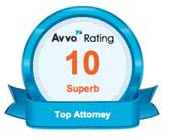Bankruptcy is often seen as a way to start over, with a clean slate. There are different ways of getting there. While Chapter 7 is seen as the "wipe clean and start over" method that involves the closure of a debtor's business and a liquidation sale to repay creditors, Chapter 11 is more of a way to repay and restructure not only your debt but your method of repayment. Often, the restructuring also involves obtaining new funding and realigning assets.
While this may seem like the best way of doing business in your case, it must be said that there are disadvantages. It is time-consuming and more costly than any other forms of bankruptcy. The advantages are that you have more time to file a plan and you have the opportunity to restructure instead of outright selling your assets or company.
Did you know that your creditors can file for Chapter 11 bankruptcy protection for you? This is called an involuntary petition. Once this is filed in the United States Bankruptcy Court, an automatic stay of collection activity begins. This means that any creditors that have asked for repayment in the past must cease this activity and wait for the court to allow it to begin again. This is when the negotiation between the debtor and its creditors begins.
After the petition is filed, the business can continue its affairs without worry. Alongside this, the debtor is working with the U.S. Bankruptcy Court to bring about a repayment plan that works for everyone involved. This usually means that the repayment amount is made on a regular basis and is not at the same rate as it was.
Being informed about the different ways to file bankruptcy may be important to you. Chapter 11 is one way that a business, or even an individual, may be able to get on with business.
Source: FindLaw, "Chapter 11 Bankruptcy," accessed Sep. 09, 2015








No Comments
Leave a comment